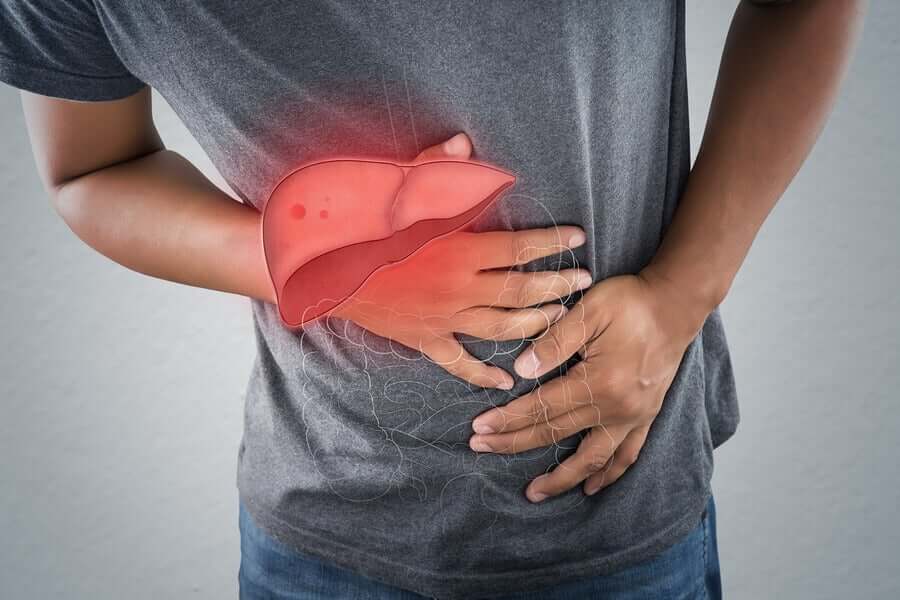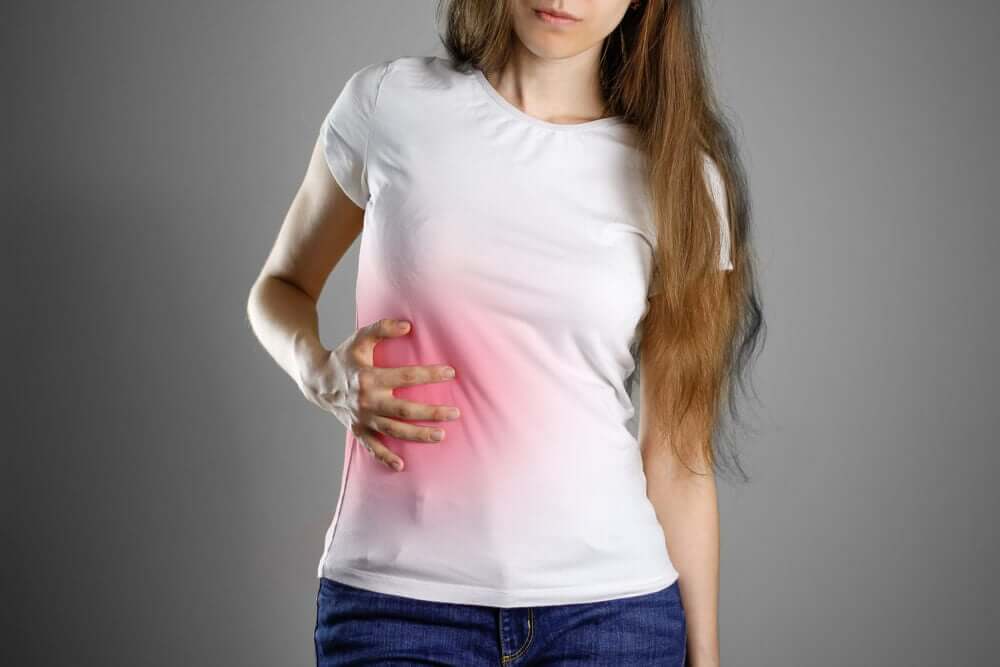Primary Biliary Cholangitis: Causes, Symptoms, and Complications


Reviewed and approved by the doctor Leonardo Biolatto
Primary biliary cholangitis is a chronic liver disease that destroys the bile ducts in the liver. The liver produces bile to rid the organ of toxins and waste, which then move to the gallbladder through the bile ducts.
In healthy bodies, this bile remains stored in the gallbladder while the body is fasting. Once you eat something, the gallbladder contracts and releases the bile to the digestive tube. However, with primary biliary cholangitis, this process is slowed or blocked.
Instead, the bile stays in the liver, damaging the organ and eventually disrupting the production of healthy liver cells. With this, scar tissue ends up covering the liver, a process known as liver cirrhosis.
Causes

Doctors still don’t know the reasons why primary biliary cholangitis happens. Nevertheless, the most solid hypothesis signals that it’s actually an autoimmune disease. In other words, the body’s immune system attacks your body and organs.
On the other hand, many scientists agree the disease is triggered by a combination of genetic and environmental factors. In either case, the T cells, a type of white blood cell, build up in the liver and, instead of fighting off germs and bacteria, they end up attacking healthy liver cells.
Slowly but surely, the healthy cells die and are replaced by scar tissue, which results in cirrhosis of the liver. When this happens, the liver stops functioning normally.
Indeed, primary biliary cholangitis primarily affects women between 30 and 60 years of age. Additionally, people of European descent and those with a family history of the disease are most at risk of contracting it. However, smoking, ingesting toxic substances, and having previous liver illnesses are all risk factors for primary biliary cholangitis.
You might like: Learn All about Liver Diseases
Symptoms
More than 50% of people with primary biliary cholangitis don’t have symptoms. Normally, the disease is detected during a routine blood test or another medical exam. Individuals who do have symptoms of the disease typically have a less favorable prognosis.
Some of the symptoms of early-stage primary biliary cholangitis are itchiness of the skin, dry eyes and mouth, and fatigue. In more advanced stages of the disease, other symptoms appear, such as:
- Swelling of the spleen
- Pain in the upper right area of the abdomen
- Pain in the muscles, bones, and joints
- Swelling in the feet and ankles
- Xanthoma, a skin condition in which fat builds up under the skin around the eyes, eyelids, elbows, knees, or the palms of the hands or feet
- Liquid retention in the abdomen
- Jaundice, or yellow tinge in the skin and eyes
- Hyperpigmentation on parts of the skin not normally exposed to the sun
- Osteoporosis
- High cholesterol
- Diarrhea
- Steatorrhea, or fat in stools
- Hypothyroidism
- Weight loss
Complications

Primary biliary cholangitis progresses slowly and causes serious liver damage and other potential diseases, such as:
- Cirrhosis. This is the most common side effect, which can lead to liver failure and other complications. In cases of cirrhosis, the prognosis is not typically favorable.
- Portal hypertension. When pressure increases within the portal vein, it can result in gastrointestinal bleeding, which can be fatal.
- Splenomegaly. This condition occurs when the spleen becomes enlarged and could potentially rupture.
- Gallstones. This can be very painful and can cause infections.
- Varicose veins. Enlarged veins are delicate and can bleed easily. Additionally, if the varicose veins appear in the esophagus or stomach, possible bleeding could be life-threatening.
- Liver cancer.
- Hepatic encephalopathy. This condition causes brain function to decline due to the buildup of toxins in the bloodstream. Typically, memory and concentration are most affected.
- Osteoporosis.
- Vitamin deficiencies.
- Others. Individuals with primary biliary cholangitis have a higher risk of contracting other diseases like metabolic conditions, immune diseases, thyroid issues, rheumatoid arthritis, and CREST syndrome.
Other interesting facts
Currently, there’s no cure for primary biliary cholangitis. However, there are many medications that can help slow the advancement of the disease and prevent further complications. Likewise, the most common treatment for the disease is usually ursodeoxycholic acid or ursodiol.
Recently, other treatments like Obeticholic acid, sold as Ocaliva, fibrates, methotrexate, and colchicine have been green-lighted. All of these medicines have been shown to have a moderate effect on primary biliary cholangitis.
Finally, if medicine doesn’t prove to be successful, the only viable solution is a liver transplant, which is quite effective. Still, there have been reports of primary biliary cholangitis reappearing in the transplanted liver.
All cited sources were thoroughly reviewed by our team to ensure their quality, reliability, currency, and validity. The bibliography of this article was considered reliable and of academic or scientific accuracy.
- Guerrero-Hernández, I., Montaño-Loza, A., Gallegos-Orozco, J. F., & Weimersheimer-Sandoval, M. (2007). Hepatitis autoinmune y colangitis esclerosante primaria: ¿asociación dependiente o independiente? Revista de Gastroenterología de México, 72(3), 240-243.
- Purohit T, Cappell MS. Primary biliary cirrhosis: Pathophysiology, clinical presentation and therapy. World J Hepatol. 2015;7(7):926–941. doi:10.4254/wjh.v7.i7.926
- Kouroumalis E, Samonakis D, Voumvouraki A. Biomarkers for primary biliary cholangitis: current perspectives. Hepat Med. 2018;10:43–53. Published 2018 Jun 18. doi:10.2147/HMER.S135337
- Lleo, A., Marzorati, S., Anaya, J. M., & Gershwin, M. E. (2017, November 1). Primary biliary cholangitis: a comprehensive overview. Hepatology International. Springer. https://doi.org/10.1007/s12072-017-9830-1
- Younossi, Z. M., Bernstein, D., Shiffman, M. L., Kwo, P., Kim, W. R., Kowdley, K. V., & Jacobson, I. M. (2018). Diagnosis and Management of Primary Biliary Cholangitis. American Journal of Gastroenterology. Nature Publishing Group. https://doi.org/10.1038/s41395-018-0390-3
-
Pandit S, Samant H. Primary Biliary Cholangitis (Primary Biliary Cirrhosis) [Updated 2019 Feb 28]. In: StatPearls [Internet]. Treasure Island (FL): StatPearls Publishing; 2019 Jan-. Available from: https://www.ncbi.nlm.nih.gov/books/NBK459209/
This text is provided for informational purposes only and does not replace consultation with a professional. If in doubt, consult your specialist.








